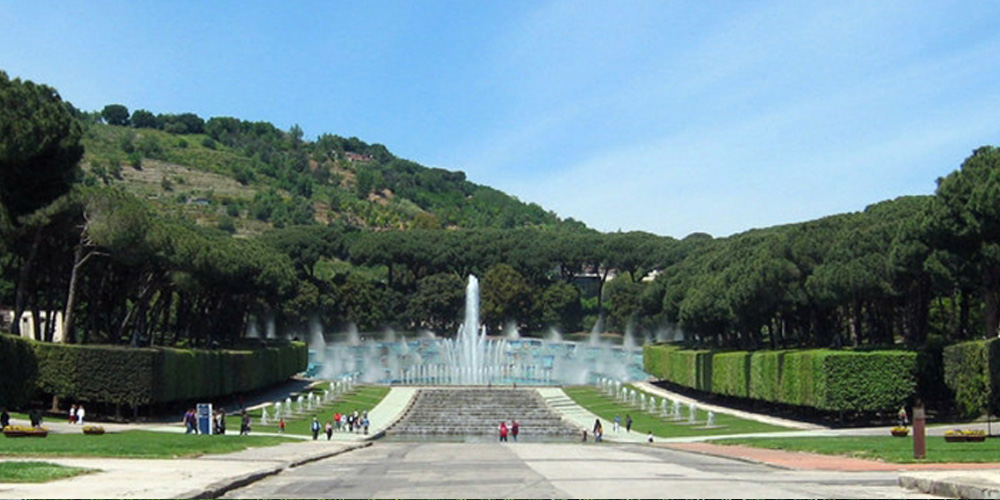The Mostra d'Oltremare: the Esedra's fountain
The Mostra d'Oltremare in Naples

The Mostra d'Oltremare: the Mediterranean theatre
The Mediterranean theatre is a work of 1940 realized after national competition won by N. Barillà, V. Gentile, F. Mellia, G. Sambito and renovated in 1952 by the genius of Luigi Piccinato, who had worked on the entire complex of the exhibition already in 1940.
The building is characterized by a T-shaped plant, born from the intersection of what was supposed to be the Palazzo dell'Arte and the same theatre, and a monumental façade composed of a marble travertine frame that frames the large neoclassical gallery with the its fourteen columns of giant order, which creates a chiaroscuro effect thanks to the large fresco on the inner wall, made by Chiancone and Barillà.
The Theatre also houses the offices of the Mostra and the Sala Italia. Preceded by an elegant foyer, it is the location, throughout the year, of a dense program of conventions, national and international congresses of various themes, fairs, shows, concerts, etc.
The Theater has 815 seats plus 4 disabled seats, a 105 square meter stage and also a 12 x 6.5 meter screen for film screenings.
Events in the Mostra d'Oltremare: Swimming pool Restaurant
The restaurant with swimming pool is a work by Carlo Cocchia. It is conceived as a building of intersection between the main axes of the Mostra, it has a T-shape to meet the above needs. Designed in 1940, it contains a restaurant, a café, a terrace and a swimming pool in one complex. The restaurant is built precisely in relation to the latter as you can enjoy the show in the water even sitting comfortably, as in the most modern sports complexes.
The building is home to galas, side events at congresses, conventions, etc.
Exhibitions at the Mostra d'Oltremare: the Latin America Pavilion
The Latin America Pavilion, now, is one of the greatest examples of rationalist architecture in Italy, built initially in 1940, it was rebuilt in 1952 by the architects M. Capobianco, A. Marsiglia and A. Sbriziolo. A porch with slender pillars leaning against the original building has been inserted.
It offers spaces of various sizes: from a minimum of 45 square meters to a maximum of 150 square meters for 9 meters of height for various exhibitions.
Around the Mostra d'Oltremare
Here we have listed only some of the main exhibition complexes of the Mostra d'Oltremare, but to mention there are still the Golden Cube, a cube-shaped building covered by an Arabic mosaic with golden hues, or the majestic complex of the Flegrea Arena, a 6000-seat arena and still the amusement park of Edenlandia and the zoo, that make Mostra one of the most beautiful places in Naples.










Lascia un commento